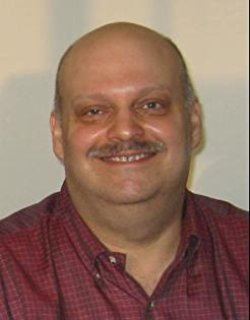Name David Hurwitz | Role Writer | |
 | ||
Books The Mahler Symphonies, Getting the most out of Mozart, Beethoven Or Bust: A Practical, Beethoven's Fifth and Seventh, Exploring Haydn: A Listener's | ||
David Hurwitz (August 29, 1961) is a classical music writer, record reviewer, and percussionist. He was born in Wilmington, Delaware and grew up in Connecticut. He earned graduate degrees in Modern European History from Johns Hopkins University and Stanford University, and has studied and played the piano, clarinet, viola, and percussion.
Contents
Musical criticism
Hurwitz has written classical music reviews for High Fidelity, Fanfare, Amazon.com, and the website Classics Today (of which he is a founder and Executive Editor). Hurwitz has written several books designed to acquaint the casual listener with classical music, including Beethoven or Bust: A Practical Guide to Understanding and Listening to Great Music. He has also written in Amadeus Press's "Unlocking the Masters" series, which includes books on specific composers, such as Exploring Haydn: A Listener's Guide to Music's Boldest Innovator. as well as other composers including Antonín Dvořák, Mozart and more; and, "Owner's Manuals" to some of their works, such as the symphonies of Mahler, Shostakovich, and Sibelius. Hurwitz resides in Brooklyn, New York. His most recent books include studies of Beethoven's Fifth and Seventh Symphonies, the Brahms symphonies, Leonard Bernstein's orchestral music, Richard Strauss, and C.P.E. Bach.
Musicological scholarship
Hurwitz has published original musicological research on the controversial topic of vibrato in 19th-century musical performance. His study “So Klingt Wien: Conductors, Orchestras, and Vibrato in the 19th and Early 20th Century,” was published in the journal Music and Letters in February, 2012 In it, Hurwitz marshals evidence from period treatises and other sources to oppose the arguments of musicologist Clive Brown, conductor Sir Roger Norrington, and others that orchestral string players applied vibrato only as an ornament, not as a basic sound -and that the basic orchestral string tone was "straight" or vibrato-free - during the period in question; Hurwitz argues that continuous vibrato was, instead, already typical.
In a 2014 study, "Vibrato, the Orchestral Organ and the ‘Prevailing Aesthetic’ in Nineteenth-Century Symphonic Music," published in the Cambridge University Press journal Nineteenth-Century Music Review, Hurwitz surveyed extensive evidence on the design of organs in the nineteenth century - including correspondence, published articles, transcriptions, and actual organs surviving intact from the era. He argues that they demonstrate that in seeking to capture the sound of string sections as faithfully as possible, organ builders of the nineteenth century were unanimous and quite explicit in reporting that string sections played with continuous vibrato.
